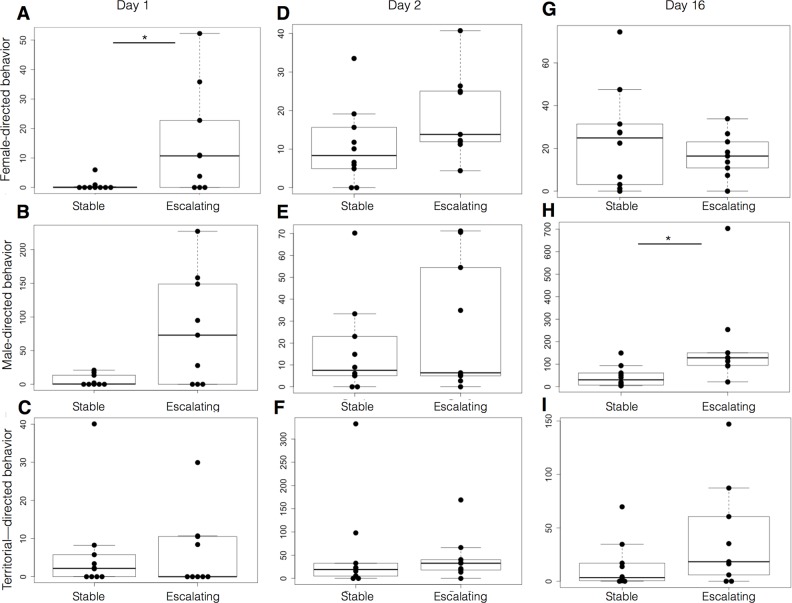Fig. 3.
Males that ultimately display escalating aggression behave differently when placed in different social contexts. The behavior quantified for 15 min of observation in Days 1, 2 and 16 shows differences between males that were later classified as escalating versus stable aggressive. On Day 1, when males are in a novel territory facing a novel opponent, escalating aggressive males are significantly more proactive: showing more female-directed behaviors prior to establishing a territory (A), a trend in more male-directed behavior (B), and no difference in non-social territorial behaviors (C). On Day 2 the dominant male was familiar with his territory and his opponent. We saw no significant differences in behaviors on this day (D-F). On Day 16, when we introduced a novel intruder, the escalating aggressive type performed more aggressive male-directed behavior toward the challenger (H) but showed no change in female (G) or non-social territorial behavior (I). Behaviors are expressed as time spent (s) engaged in male-directed, female-directed or non-social territorial behaviors. Data are plotted as mean time spent (s). Top and bottom of boxes represent the first and third quartiles, respectively; whiskers extend to the most extreme data points no more than 1.5 times the interquartile range from the box; and horizontal lines within the boxes represent group medians. Asterisks indicate a statistically significant difference (*P<0.05, Mann–Whitney).

